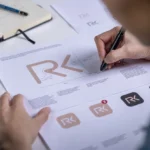In Part 1 of this blog, we explored the foundations of Indian copyright and design laws, highlighting their scope, duration, registration requirements, and key differences. But in the real world, creative works often straddle both legal regimes, leading to confusion, missed protection, or even disputes. In this second part, we examine the overlap under Section 15 of the Copyright Act, discuss landmark judgments, and practical challenges faced by creators. We also unpack the registration processes, enforcement tools, and tips for choosing the right protection strategy. This is a useful guide for creative arts and industrial designs.
The Overlap: Section 15 of Copyright Act1
Section 152 addresses situations where an artistic work, initially protected by copyright, is subsequently applied to an article and reproduced industrially. The core principle is to differentiate between “pure artistic works” and “designs” that serve a commercial purpose.
Section 15(1): This sub-section clearly states that copyright shall not subsist under the Copyright Act in any design which is registered under the Designs Act, 2000. This means if a creator chooses to protect their design under the Designs Act, they will automatically forego copyright protection for that specific design. The rationale is to avoid granting a longer copyright term (life of the author + 60 years) to something that essentially needs to be a part of society after a reasonable period of monopoly and protection.
Section 15(2): This is the more intricate part of the overlap. It stipulates that copyright in any design, which is capable of being registered under the Designs Act but has not been so registered, shall cease as soon as any article to which the design has been applied has been reproduced more than fifty times by an industrial process by the owner of the copyright or licensee.
Explanation of “More than 50 Reproductions Clause”
This clause serves as a critical threshold. It means that an artistic work, even if it initially enjoys copyright protection, will lose that protection if it meets two conditions:
- Eligible for Registration as a Design: The artistic work must be such that it could have been registered as a design under the Designs Act. This typically refers to designs that are applied to articles by industrial processes and appeal solely to the eye, rather than having a purely artistic or literary purpose.
- Industrial Reproduction Beyond 50 Times: If the owner of the copyright (or someone licensed by them) reproduces the article bearing that design more than fifty times using an industrial process, and the design was not registered under the Designs Act, the copyright protection for that design ceases.
After this threshold, the work loses copyright protection unless registered as a design. The intent is to compel creators who wish to commercially exploit their designs on a large scale to register them under the Designs Act, thereby bringing them under a regime designed for industrial applicability with a limited monopoly period. This encourages innovation by allowing designs to enter the public domain after a reasonable protection period.
Legal Precedent
Case: Microfibres Inc. v. Girdhar & Co3.
Summary: Microfibres Inc., a US-based manufacturer of upholstery fabrics, claimed copyright infringement over its artistic fabric designs by Girdhar & Co. The core of the dispute was whether these designs, which were industrially applied to fabrics, were protected under the Copyright Act or the Designs Act. The plaintiff argued for copyright protection, while the defendants contended that the designs were industrial and, having been reproduced more than 50 times without registration under the Designs Act, had lost copyright protection under Section 15(2).
Impact: The Delhi High Court held that the designs in question were indeed industrial designs, meant for application to articles through an industrial process. The court clarified that while an original artistic work enjoys copyright, when it is applied to an article and reproduced industrially more than 50 times, it ceases to be an “artistic work” for the purpose of copyright protection and transforms into a “design” requiring registration under the Designs Act. Since Microfibres Inc. had not registered their designs under the Designs Act and had reproduced them industrially more than 50 times, their copyright protection ceased. This landmark judgment significantly clarified the demarcation between copyright and design law in India, reinforcing the legislative intent behind Section 15(2) to prevent perpetual monopolies on industrially produced designs and encourage design registration.
Challenges at the Legal Intersection
While the frameworks governing copyright and design laws in India are well-established, their practical application often leads to complexity, especially for creators operating at the intersection of art and industry. As design-driven industries such as fashion, digital interfaces, and packaging evolve rapidly, creators frequently find themselves in a grey zone where legal distinctions are blurred and protection strategies unclear.
Design Infringement vs Copyright Infringement
The core difference between the two forms of infringement lies in the nature of the protection and the scope of use:
- Copyright infringement involves the unauthorized reproduction or adaptation of original artistic work (such as an illustration, logo, or graphic design) without the creator’s permission.
- Design infringement, on the other hand, pertains to the unauthorized application of a registered industrial design—such as the shape or pattern on a product—especially when used for commercial or industrial purposes.
However, when a single creation—say, a fabric print or a product package—has both artistic and utilitarian dimensions, determining the appropriate remedy becomes challenging. A design applied industrially could start as a copyright-protected artwork but may lose protection under Section 15 of the Copyright Act if it is not registered as a design and used for mass production.
This overlap increases the risk of enforcement gaps, especially if the creator is unaware that reproducing a work beyond 50 times may invalidate copyright protection unless it is also registered under the Designs Act 2000.
Courts will often examine:
- Whether the work was intended to be reproduced industrially.
- Whether it has been applied to more than 50 articles (triggering Section 15 of the Copyright Act).
- Whether the design serves a purely functional purpose or retains sufficient artistic character.
This judicial scrutiny can make infringement claims complex. A creator alleging copyright infringement may find the court classifying the work as a design, thereby shifting the burden of proof and altering the available remedies. Conversely, an alleged design infringer may argue that the work in question lacked the novelty required for design registration and was more akin to a common artistic motif.
Functional Design vs Artistic Work: Interpretational Uncertainty
Indian courts have repeatedly struggled with whether a work should be treated as a purely artistic creation protected by copyright or as an aesthetic design better suited to design protection. Ambiguity arises particularly when an artistic work is used on products, packaging or objects intended for commercial use.
The Synergy: Making the Right Choice
India generally prohibits dual protection. Once an artistic work becomes a “design” intended for industrial application, and particularly after 50 reproductions without registration, it ceases to be a ‘copyrighted’ work and moves to being protected under the Designs Act. Registering it as a design provides the necessary legal teeth to prevent others from making, selling, or importing similar-looking articles.
- Use copyright for artistic uniqueness.
- Use design protection for marketable forms.
This is the core principle derived from Section 15 of the Copyright Act and reiterated by the Supreme Court in the Cryogas Equipment case (April 2025). You cannot claim both copyright and design protection for the same industrially applied design.
How to Register: Copyright vs Design Protection in India
In India, while some forms of intellectual property protection arise automatically (such as copyright), others—like design rights—require formal registration to be enforceable. For creators and businesses seeking to protect their work under copyright and design laws, understanding the registration processes is vital for both legal enforcement and commercial strategy.
Below is a clear breakdown of how to register your creative work under each regime:
Copyright Registration in India
While copyright protection is automatic the moment an original work is created and fixed in a tangible medium, registration offers important evidentiary advantages in enforcement and licensing.
A person desirous of seeking protection under the Copyright Act must apply at the Copyright Office with requisite documents provided under the statute. An application to register a work under the Copyright Act takes approximately 2-4 months if no objections are found. Should the Copyright Office raise a scrutiny report seeking additional input(s), the overall process may be extended to approximately 6-12 months. Therefore, it is recommended to seek counsel from a legal professional to ensure correct and timely compliances to the statutory requirements.
Design Registration in India
Unlike copyright, design rights must be registered under the Designs Act, 2000 to enjoy legal protection. This is essential for creators in industrial design, fashion, packaging, and consumer goods sectors where visual aesthetics have commercial value.
A person or an entity seeking to obtain protection for its design under the Designs Act, 2000 must apply to the Design Wing of the Office of the Controller General or Patents, Design and Trademarks. In the normal course where no objection is raised towards compliance, applications are typically processed within a period of 6-8 months. If a scrutiny report is raised by the Office for queries and/or deficiencies, the timeline can get extended. To ensure registrability of the design and timely compliances to statutory obligations, seeking assistance of a legal professional is recommended.
To comprehensively protect creative assets, Indian creators should embrace both Copyright and Design Laws. Leveraging early copyright protection with timely design registration ensures robust legal coverage, especially under constraints of Section 15. The framework of the Supreme Court supports creators in making informed, strategic IP decisions.
FAQ
1. Who owns the rights to AI-generated content?
Currently, Indian law doesn’t recognize AI as a legal author—only human creators can hold rights. Ownership typically lies with the person who inputs creative direction or commissions the work.
2. What is the duration of copyright protection?
Copyright lasts for the lifetime of the author plus 60 years in India. This applies to literary, artistic, musical, and dramatic works.
3. What is the duration of design protection?
Registered designs are protected for 10 years, extendable by another 5 years. After that, the design enters the public domain.
4. What constitutes ‘fair use’ in copyright law?
Fair use includes limited use for purposes like research, review, reporting, or education. It depends on factors like purpose, extent, and market impact.
5. How can I register a copyright?
You can register online via the official portal at copyright.gov.in. Fill the form, upload your work, pay the fee, and await examination.
6. How can I register a design under the Designs Act?
File an application with the Design Wing at ipindia.gov.in, including visuals and Locarno classification. Registration takes 6–8 months if there are no objections.
7. Can I use copyrighted material found online freely?
No, online availability doesn’t mean free use. Always check the licensing terms or seek permission from the copyright holder.
Missed the beginning? Read Part 1 of our guide to understand the foundations before diving deeper.



